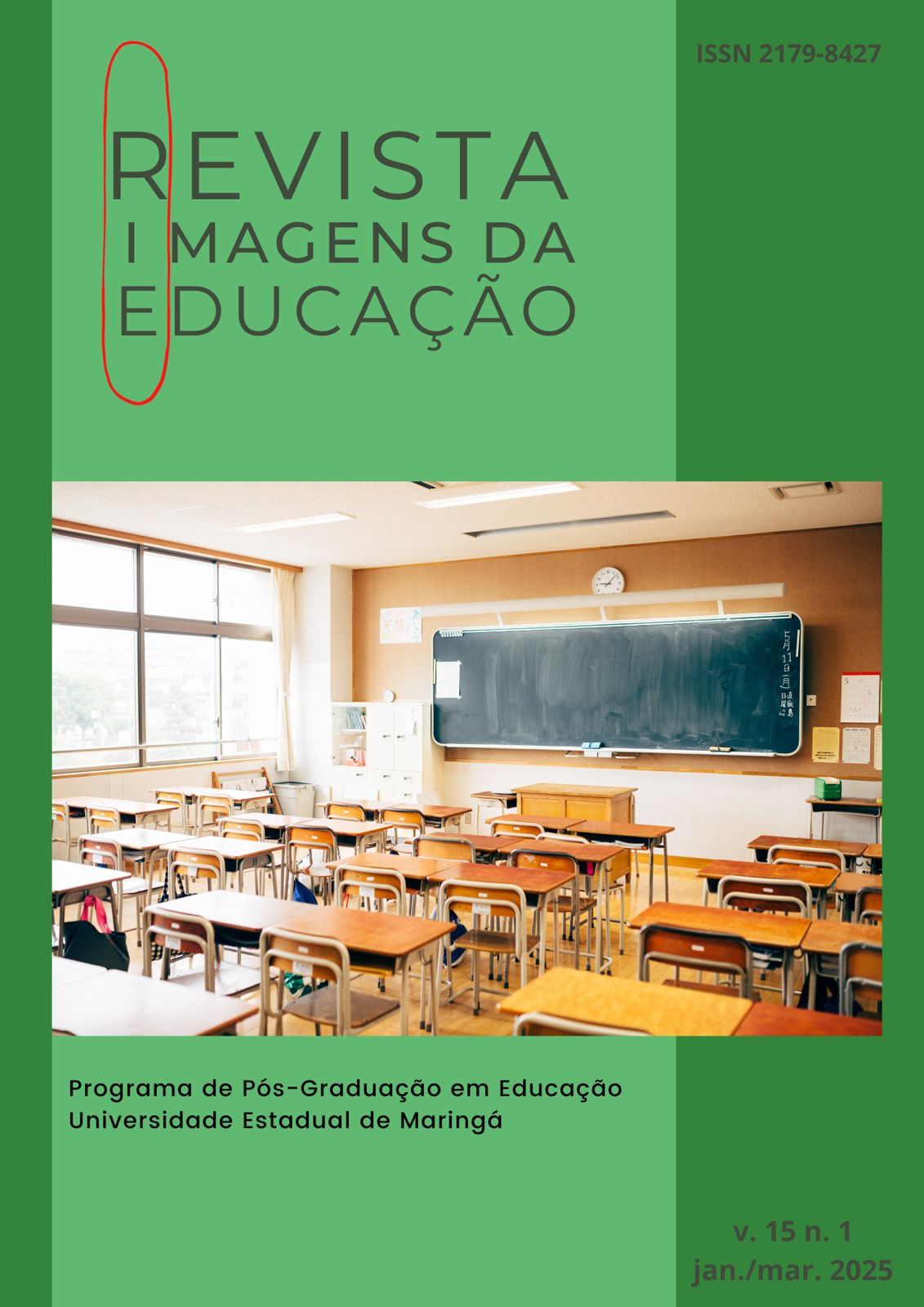FROM PREVENTION TO DAMAGE MITIGATION IN SYSTEMATIC INTIMIDATION
AN ANALYSIS OF CIVIL LIABILITY IN CASES OF CYBERBULLYING CARRIED OUT USING ARTIFICIAL INTELLIGENCE
Abstract
The phenomenon of cyberbullying has intensified with technological advances, especially with the use of artificial intelligence (AI) tools, expanding the reach and impact of aggression within the school environment. AI enables the creation of personalized intimidating content and the automated dissemination of information, increasing victims' suffering and complicating the identification of those responsible. This article aims to analyze civil liability of internet application providers within the context of school cyberbullying, considering the new legal challenges posed by the involvement of AI systems in this type of systematic intimidation. This is a bibliographic and documentary research, with a deductive approach, which examines relevant legislation, doctrines and jurisprudence to understand the applicability of civil liability in cases mediated by technology. The final considerations emphasize that, given the complexities brought by AI, it is essential to develop a regulatory approach capable of preventing and mitigating the harm caused to victims, ensuring protection within the school environment.
Downloads
References
Bohn, C., & Hickey, M. (2010). Bullying and social status during school transitions. In S. R. Jimerson, S. M. Swearer, & D. L. Espelage (Eds.). Handbook of Bullying in Schools: An International Perspective. (pp. 1992-202). New York: Routledge.
Castells, M. (2020). A sociedade em rede. Tradução: Roneide Venancio Majer. 22. ed. São Paulo: Paz e Terra.
Coeckelbergh, M. (2020). Artificial intelligence, responsibility attribution, and a relational justification of explainability. Science and Engineering Ethics, Cham, v. 26, p. 2051-2068. Recuperado de: https://doi.org/10.1007/s11948-019-00146-8
Doneda, D. (2020). Da privacidade à proteção de dados pessoais: fundamentos da formação da Lei Geral de Proteção de Dados. 2. ed. São Paulo: Thomson Reuters Brasil. E-book.
Faleiros Júnior, J. L. M. & Colombo, C. (2022). A tutela jurídica do corpo eletrônico: alguns conceitos introdutórios. In: C. Colombo, W. Engelmann & J. L. M. Faleiros Júnior (Coords.). Tutela jurídica do corpo eletrônico: novos desafios ao direito digital (pp. 3-32). Indaiatuba, SP: Foco.
Fante, C. (2005). Fenômeno Bullying: como prevenir a violência nas escolas e educar para a paz. Campinas, SP: Ed. Versus.
G1. (2024, 25 de setembro). Alunos são expulsos após usar inteligência artificial para criar nudes falsos de professora e colegas em escola particular de Cuiabá. G1. Recuperado de: https://g1.globo.com/mt/mato-grosso/noticia/2024/09/25/alunos-sao-expulsos-apos-usar-inteligencia-artificial-para-criar-nudes-falsos-de-professora-e-colegas-em-escola-particular-de-cuiaba.ghtml
Galdino, J. C. S et al. (Orgs). (2013). Curso de Informática Avançada. Natal: IFRN Editora.
Garaigordobil, M. & Oñederra, J. A. (2010). La violencia entre iguales: Revisión teórica y estrategias de intervención [Peer harassment: Theoretical review and intervention strategies]. Madrid: Pirámide.
Guimarães, J. A. S. A. (2022). O direito ao esquecimento como ferramenta de defesa nas novas tecnologias. In: C. Colombo, W. Engelmann & J. L. M. Faleiros Júnior (Coords.). Tutela jurídica do corpo eletrônico: novos desafios ao direito digital (pp. 101-122). Indaiatuba, SP: Foco.
Henriques, I., Pita, M. & Hartung, P. (2021). A proteção de dados pessoais de crianças e adolescentes. In: L. S. Mendes, D. Doneda, Sarlet, I. W. & Rodrigues Junior, O. L. (Coords.). Tratado De Proteção De Dados Pessoais (pp. 199-225). Rio de Janeiro: Forense.
Jung, C. G. (2011). O desenvolvimento da personalidade. Petrópolis: Vozes.
Lei nº 12.965, de 23 de abril de 2014. (2014). Estabelece princípios, garantias, direitos e deveres para o uso da Internet no Brasil. Brasília, DF: Presidência da República, 2014. Recuperado de: https://www.planalto.gov.br/ccivil_03/_ato2011-2014/2014/lei/l12965.htm#:~:text=L12965&text=Estabelece%20princ%C3%ADpios%2C%20garantias%2C%20direitos%20e,uso%20da%20Internet%20no%20Brasil.&text=Art.,Munic%C3%ADpios%20em%20rela%C3%A7%C3%A3o%20%C3%A0%20mat%C3%A9ria
Lei nº 13.185, de 6 de novembro de 2015. (2015). Institui o Programa de Combate à Intimidação Sistemática (Bullying). Brasília, DF: Presidência da República. Recuperado de: https://www.planalto.gov.br/ccivil_03/_ato2015-2018/2015/lei/l13185.htm
Lei no 14.811, de 12 de janeiro de 2024. (2024). Institui medidas de proteção à criança e ao adolescente contra a violência nos estabelecimentos educacionais ou similares, prevê a Política Nacional de Prevenção e Combate ao Abuso e Exploração Sexual da Criança e do Adolescente e altera o Decreto-Lei nº 2.848, de 7 de dezembro de 1940 (Código Penal), e as Leis nºs 8.072, de 25 de julho de 1990 (Lei dos Crimes Hediondos), e 8.069, de 13 de julho de 1990 (Estatuto da Criança e do Adolescente). Brasília, DF: Presidência da República. Recuperado de: https://www2.camara.leg.br/legin/fed/lei/2024/lei-14811-12-janeiro-2024-795244-publicacaooriginal-170834-pl.html
Kroll, J. A. (2020). Accountability in Computer Systems. In: M. Dubber, F. Fasquale, & S. Das (Ed.). The Oxford Handbook of the Ethics of Artificial Intelligence. Oxford: Oxford University Press.
Lima, A. P. M. C. (2019). Cyberbullying: agressão virtual, consequências reais e desdobramentos jurídicos. In: A. P. M. C. Lima, C. B. Hissa & P. M. Saldanha
(Orgs.). Direito digital: debates contemporâneos (pp. 211-222). São Paulo: Revista dos Tribunais.
Miranda, F. A. (2013). O direito fundamental ao livre desenvolvimento da personalidade. Revista do Instituto do Direito Brasileiro, Lisboa, v. 2, n. 10.
Oliveira, J. C. C., Lourenço, L. M. & Senra, L. X. (2015). A produção científica sobre o cyberbullying: uma revisão bibliométrica. Psicologia em Pesquisa, Juiz de Fora, v.9, n.1, p. 31-39. Recuperado de: http://pepsic.bvsalud.org/pdf/psipesq/v9n1/v9n1a05.pdf
Olweus, D. (1993). Bullying at school: What we know and what we can do. Oxford: Blackwell.
Pasquale, F. (2017). Toward a fourth law of robotics: Preserving attribution, responsibility, and explainability in an algorithmic society. University of Maryland Legal Studies Research Papers, Baltimore, n. 21, p. 1-13. Recuperado de: http://ssrn.com/abstract=3002546
Prensky, M. (2001). Digital Natives, Digital Immigrants. In: PRENSKY, Marc. On the Horizon. NCB University Press, Bingley, v. 9, n. 5, p. 460-466, October. Recuperado de: https://www.emerald.com/insight/content/doi/10.1108/10748120110424816/full/html?utm_source=TrendMD&utm_medium=cpc&utm_campaign=On_the_Horizon_TrendMD_0&WT.mc_id=Emerald_TrendMD_0
Rosenvald, N. & Faleiros Júnior, J. L. M. (2023). Answerability e seus reflexos para a responsabilização civil. Revista IBERC, Belo Horizonte, v. 6, n. 3, p. IV-X. Recuperado de: https://revistaiberc.responsabilidadecivil.org/iberc/article/view/284
Sarlet, I. W. (2021). Fundamentos Constitucionais: o direito fundamental à proteção de dados. In: L. S. Mendes, D. Doneda, I. W. Sarlet, & Rodrigues Junior, O. L. (Coords.). Tratado de Proteção de Dados Pessoais (p. 21-59). Rio de Janeiro: Forense.
Schreiber, A. (2013). Novos paradigmas da responsabilidade civil. São Paulo: Atlas.
Shariff, S. (2009). Confronting Cyber-bullying: What Schools Need to Know to Control Misconduct and Avoid Legal Consequences. New York: Cambridge University Press.
Smith, P. et al. (2008). Cyberbullying: its nature an impact in secondary school pupils. Journal of Child Psychology and Psychiatry, 49(4), 376-385. doi:10.1111/j.1469-7610.2007.01846.x
Superior Tribunal de Justiça - STJ (4ª Turma). (2022). Recurso Especial nº 1783269/MG. Relator: Ministro Antonio Carlos Ferreira, julgado em 14/12/2021, DJe 18/02/2022. Recuperado de: https://processo.stj.jus.br/processo/pesquisa/?aplicacao=processos.ea&tipoPesquisa=tipoPesquisaGenerica&termo=REsp%201783269
TIC Kids Online Brasil 2019 (2020). CETIC - Centro Regional de Estudos para o Desenvolvimento da Sociedade da Informação, 2020. Recuperado de: https://cetic.br/media/analises/tic_kids_online_brasil_2019_coletiva_imprensa.pdf
Wimmer, M. (2019). Inteligência artificial, algoritmos e o direito: um panorama dos principais desafios. In: In: A. P. M. C. Lima, C. B. Hissa & P. M. Saldanha.
(Orgs.). Direito digital: debates contemporâneos (pp. 15-30). São Paulo: Revista dos Tribunais.
Yaegashi, J. G. & Otero, C. S. (2023). Bullying e Cyberbullying Escolar: Responsabilidade Civil Como Instrumento de Tutela da Personalidade. Curitiba: Juruá Editora.
Copyright (c) 2025 Imagens da Educação

This work is licensed under a Creative Commons Attribution-NonCommercial-NoDerivatives 4.0 International License.
DECLARATION OF ORIGINALITY AND CESSATION OF COPYRIGHT
I Declare that current article is original and has not been submitted for publication, in part or in whole, to any other national or international journal. I also declare that once published in the Imagens da Educação, a publication of the IES (UEM, UEL, UFSM, Univali, Unioeste and UEPG), it will not be submitted by me or by any co-author to any other journal. In my name and in the name of co-authors, I shall cede the copyright of the above mentioned article to the Universidade Estadual de Maringá and I declare that I know that the non-observance of this norm may make me liable for the penalties contemplated in the Law for the Protection of Authors' Rights (Act 9609 of the 19th February 1998).















1.png)

